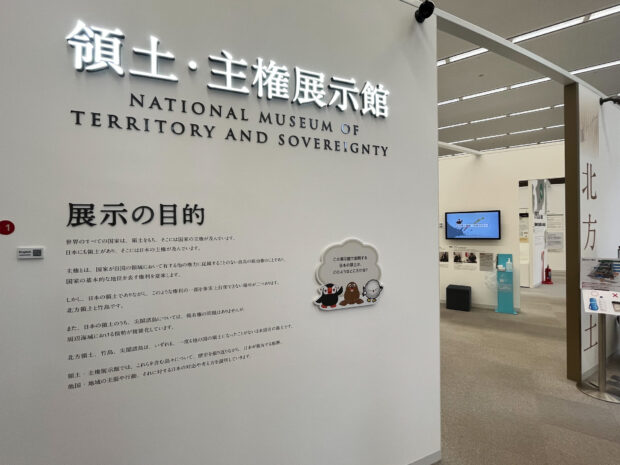A small museum in Tokyo asserts Japanese sovereignty

‘ACADEMIC APPROACH’ | Launched in 2018, the museum in Tokyo is part of the Japanese government’s efforts to raise public awareness of their own sovereignty over Japanese territories being claimed by other countries. (Photo by FRANCES MANGOSING / Philippine Daily Inquirer)
TOKYO — Somewhere in the center of Japan’s busy capital is a small museum that asserts Japanese sovereignty over islands that are also being claimed by China, Russia and South Korea.
The National Museum of Territory and Sovereignty was launched in 2018 by the Cabinet Secretariat’s Office of Policy Planning and Coordination on Territory and Sovereignty in the wake of Chinese incursions in the Tokyo-administered Senkaku Islands in the East China Sea.
The museum, which sees an average of 10,000 visitors a year, is part of the government’s efforts to go beyond the internet to raise public awareness on its views on territory and sovereignty.
“Basically, we are taking the academic approach to prove that those islands belong to Japan and we don’t use an emotional approach,” Kohei Sato, senior coordinator at the Office of Policy Planning and Coordination on Territory and Sovereignty, said in an interview.
The Inquirer visited the museum in late October as part of a program on Japan’s security situation in East Asia upon the invitation of Japan’s Ministry of Foreign Affairs.
Article continues after this advertisementThe exhibit features three main sections dedicated to the Senkaku Islands, Northern Territories, and Takeshima. The displays include a timeline and documents such as photographs, letters, maps, and news articles that underscore Japan’s official position that these islands are inherent parts of its territory.
Article continues after this advertisementDisputed islands
Out of these three islands claimed by Japan, only the Senkakus are held by Tokyo at present, while Takeshima is controlled by South Korea, and the Northern Territories (Etorofu, Kunashiri, Shikotan, and Habomai) are occupied by Russia.
China has stepped up incursions around the Senkakus in recent years, in what the Japanese government claims as an attempt at changing the status quo.
Japanese officials have also expressed concern that Chinese coast guard vessels intruding on these waters have become bigger and more armed.
China and Taiwan began to claim sovereignty over the Senkakus only in the 1960s after the discovery of potential oil reserves in the East China Sea, while Japan claims to have had effective control over the islands for more than a century.
For Takeshima and the Northern Territories, held for decades by South Korea and Russia, respectively, Japan claims that these are “illegally occupied.”
A timeline of events and documents, as well as counter-claims by the countries involved, are also presented in the exhibit to assert that these are part of Japan’s “inherent territory.”
Tokyo said it would continue to seek settlement of the disputes over territorial sovereignty on the basis of international law.
Transparency strategy
Saito admitted that some countries involved objected to the museum, but he did not name them.
A digital version of the museum is available online in English and Japanese. To engage young learners, the museum created mascot characters for each section.
Another government effort to raise awareness on territorial issues among its citizens is to include it in the national education guidelines and it became mandatory for elementary students in 2017 and for high school students in 2018, Saito said.
Both Japan and the Philippines have further deepened security ties during the recent visit of Prime Minister Fumio Kishida to Manila in the wake of Chinese aggressiveness in the East and South China Seas, where they have their respective territorial disputes with China.
Saito said the Philippines is also doing well in raising awareness of China’s aggressive tactics in the West Philippine Sea on the international stage through its transparency strategy.
“The way you present the issue to the international community, we have to learn from you,” he said.